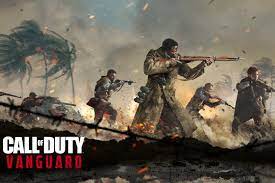
AI is changing how we tell stories with pictures and videos. In 2025, I expect we’ll see some amazing new tools for creating visual content. These AI systems will make it easier for anyone to bring their ideas to life in stunning ways.
The biggest change will be AI that can turn text and images into realistic videos automatically. This means we’ll be able to describe a scene in words, provide a few sample images, and have an AI create a full video clip. It’s like magic for filmmakers and artists. Tools from companies like https://ltx.studio/ are already moving in this direction.
I’m excited to see how these AI visual storytelling tools will boost creativity. They’ll help people with great ideas but limited technical skills make professional-looking content. At the same time, pros will use AI to speed up their work and try new things. The next few years should bring some truly mind-blowing visuals as this tech keeps improving.
The Emergence of AI in Visual Storytelling
AI is changing how we create and share visual stories. It’s making it easier and faster to produce high-quality videos and other visual content.
Rise of AI Video Production
I’ve seen AI video tools become much more advanced in recent years. They can now generate realistic animations and special effects with just a few clicks. AI helps filmmakers and content creators bring their ideas to life without needing a big budget or technical skills.
Some AI video tools can even turn text scripts into full animated videos automatically. This saves a lot of time in the production process. AI is also getting better at tasks like color grading, sound design, and video editing.

For example, AI can analyze hours of footage and put together a rough cut based on the most interesting moments. This gives editors a great starting point from which to work.
Influence on Content Creation Automation
AI is automating many parts of visual content creation. It can generate images, write scripts, and even create entire short videos from scratch.
This automation is changing how visual stories are made. Instead of starting from a blank page, creators can now give an AI system a basic idea and get several options to build on.
AI tools can also personalize content for different viewers. They analyze data on what people like and tailor videos to match their interests.
I think this makes storytelling more engaging, but it also raises questions about creativity and originality. As AI gets better, the line between human-made and AI-generated content is blurring.
Innovative AI Storyboarding and Character Design
AI is changing how creators bring stories to life visually. New tools make it faster and easier to go from ideas to polished storyboards and character designs.
AI Storyboard Generator
I’ve seen AI storyboard tools transform scripts into visual sequences in minutes. They save hours of manual drawing. Apps like StoryboardHero can turn text into rough sketches of key scenes and shots. I can then refine these computer-generated boards to match my vision.

The AI helps with things like camera angles, lighting, and composition. It gives me a quick way to visualize my story and experiment with different approaches.
Some AI tools even create animatics – simple animations of the storyboards. This helps me get a sense of timing and pacing early on. I find it useful for pitching ideas or getting feedback before full production starts.
AI Character Generator
AI character creators are getting very good at making unique, customized characters. I input traits like age, ethnicity, and personality. The AI then generates a range of options matching those traits. It can create both 2D illustrations and 3D models. This saves me time in the initial design phase.
Some AI tools can even generate consistent character designs across multiple poses and expressions. This helps keep characters on-model throughout a project. The AI learns the character’s key features and applies them to new poses.
Character Customization
After generating base characters, I use AI to fine-tune designs. I can adjust features like hairstyles, clothing, and accessories. Some tools let me blend traits from different characters. This gives me more control over the final look.
AI helps me create variations of characters too. I can generate the same character at different ages or in different outfits quickly. This is great for showing character development or designing costume changes. The AI maintains key features while applying the requested changes.
AI-Aided Filmmaking Platforms
AI is changing how we make movies. New tools help filmmakers work together and create content faster. Let’s look at some key platforms and how they enable teamwork.
Overview of AI Filmmaking Platform
Runway is a popular AI filmmaking platform. It has over 30 AI tools for making videos and images. I can use Runway to generate videos from text prompts or edit existing footage. The platform also offers special effects powered by AI.
Other platforms like Descript focus on video editing. They use AI to make cuts and remove filler words automatically. This saves me time in post-production. Some AI tools can even analyze scripts to predict what audiences will like.
Role of Real-Time Collaboration
AI platforms are making it easier for film teams to work together. I can now edit videos with my team in real time, no matter where we are. We can all see changes instantly and give feedback.
Cloud-based tools let us share large video files quickly. AI helps organize footage and suggests edits so we can focus on creative decisions. Some platforms use AI to generate subtitles or translate dialogue, speeding up the localization process.
These collaborative features are especially helpful for remote teams. They’re changing how movies are made, from indie films to big studio productions.
Revolutionizing Editing with AI
AI is changing how we edit videos in 2025. It makes the process faster and lets creators do more with their footage. New tools give us ways to change videos that weren’t possible before.
Advancements in AI Video Editing Software
I’ve seen amazing progress in AI video editing software. These programs can now understand what’s in a video and make smart edits on their own. They can pick out the best shots and put them together in a smooth sequence.
Some AI editors can even change how people look or what they’re wearing in videos. I just type in what I want, and the AI makes it happen. It’s like having a pro editor working alongside me.
These tools also help with color correction and audio mixing. They can match the style of famous movies or directors too. This lets me create high-quality videos without spending years learning complex editing skills.
Automated Editing Technologies
Automated editing has come a long way. I now use AI to quickly turn hours of footage into short, engaging clips. It saves me tons of time and effort.
The AI can find the most interesting moments in long videos. It picks out exciting action, funny lines, or key points from interviews. This is super helpful for making social media content.
I’ve also used AI to add special effects and graphics to my videos. It can track objects and people, making it easy to add cool visual elements. Some tools even let me create entire scenes from just a text description.
These automated technologies have made video editing much more accessible. Even beginners can now make professional-looking videos with just a few clicks.
AI-Driven Tools for Enhanced Storytelling
AI is changing how we tell stories in 2025. New tools help creators make better content faster. Let’s look at some key AI tools for storytelling.
AI-Driven Storytelling Tools
AI writing assistants are game-changers for storytellers. They help generate ideas, develop plots, and create characters. I use these tools to spark my creativity when I’m stuck.
Some AI tools can even write short stories or scripts on their own. While they’re not perfect, they give me a good starting point to build on.
AI can also help with editing and proofreading. It catches errors I might miss and suggests ways to improve my writing.
AI Pitch Deck Generator
Pitching stories is easier with AI pitch deck generators. These tools take my story ideas and turn them into eye-catching presentations.
I input my story outline, characters, and key plot points. The AI then creates slides with images, text, and graphics to bring my pitch to life.
This saves me hours of work on design and layout. It lets me focus on refining my story concept instead of fussing with PowerPoint.
Creative AI Solutions in Narrative Creation
AI offers new ways to enhance stories beyond just words. Text-to-video tools can turn my written scenes into short animated clips. This helps me visualize my story and spot areas that need work.
AI image generators create custom artwork for my stories. I describe a scene, and the AI produces matching visuals. This is great for book covers or story illustrations.
Voice synthesis lets me hear my characters speak. It brings dialogue to life and helps me fine-tune each character’s unique voice.





